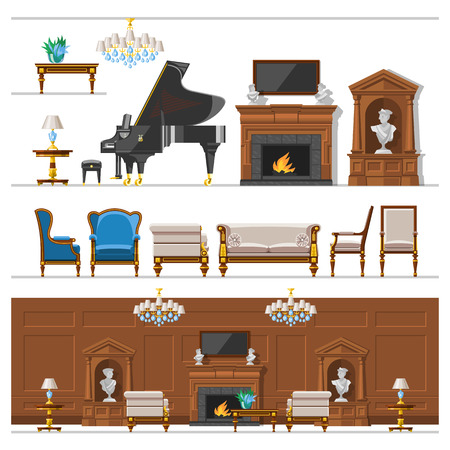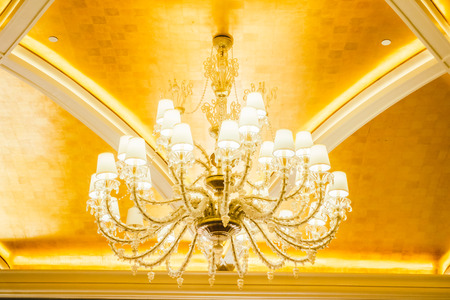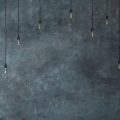Understanding British Natural Light
The foundation of any successful interior lighting scheme in the UK is a thorough appreciation of Britain’s distinctive natural light. Unlike sunnier climates, Britain’s weather is famously changeable and often overcast, with daylight hours fluctuating dramatically throughout the year. The low angle of the sun, especially in winter months, means natural light can appear soft and diffuse, casting gentle shadows that shape our perception of space. For designers and homeowners alike, this presents both challenges and opportunities: rooms may feel dim or gloomy without careful consideration, yet the subtle quality of British daylight can be harnessed to create atmospheres of warmth and intimacy. As a result, strategies for interior lighting must respond thoughtfully to these conditions—layering artificial light sources to complement and enhance fleeting daylight, choosing fixtures and fittings that reflect rather than absorb precious light, and considering the orientation of windows to maximise brightness during shorter days. Ultimately, understanding how Britain’s unique climate interacts with interior spaces is essential for crafting homes that are both beautiful and functional all year round.
2. Key Types of Lighting in UK Homes
When designing interiors with a British sensibility, understanding the core types of lighting—ambient, task, and accent—is fundamental to achieving both functional and aesthetic harmony. Each type plays a unique role in shaping the atmosphere, usability, and style of a home, whether it’s a classic Victorian terrace or a sleek London penthouse.
Ambient Lighting: Setting the Scene
Ambient lighting forms the backbone of any room, providing an even layer of light that creates a comfortable baseline. In traditional British homes, this often takes the form of ceiling-mounted pendants or ornate chandeliers that complement period features like cornicing or fireplaces. In contrast, contemporary interiors may favour recessed downlights or minimalist LED strips that wash walls softly and enhance clean architectural lines.
Task Lighting: Practicality Meets Style
Task lighting is focused illumination intended for specific activities such as reading, cooking, or working from home—a particularly relevant feature in many British households where multi-functional spaces are common. Adjustable desk lamps in a study nook, under-cabinet lights in a Shaker-style kitchen, or swing-arm sconces by a Chesterfield sofa all exemplify how task lighting can blend seamlessly into both heritage and modern settings.
Accent Lighting: Highlighting Character
Accent lighting is used to draw attention to decorative elements or architectural details, helping to celebrate the rich textures and history often found in British interiors. Picture lights above classic oil paintings, LED uplighters showcasing exposed brickwork, or spotlights illuminating beloved collections of ceramics are all effective ways to add visual intrigue and depth.
Comparison Table: Lighting Types in Traditional vs. Modern British Interiors
| Lighting Type | Traditional British Example | Modern British Example |
|---|---|---|
| Ambient | Candle-style chandelier over dining table | Recessed ceiling LEDs in open-plan living area |
| Task | Tiffany glass reading lamp beside wingback chair | Sleek under-cabinet strip lights in minimalist kitchen |
| Accent | Picture light above gilded mirror on mantelpiece | Concealed LED uplights highlighting architectural niches |
The Importance of Layering Light in British Homes
A well-designed interior uses these three types of lighting in thoughtful layers, allowing homeowners to adapt their spaces for different moods and practical needs throughout the day. This approach not only enhances comfort but also pays homage to both the storied heritage and evolving innovation of British design.

3. Period Properties and Contemporary Spaces
When it comes to interior lighting in the UK, one size certainly does not fit all. The architectural tapestry here is a rich blend of historic charm and modern ingenuity—each demanding a tailored approach to illumination.
Victorian Terraces: Embracing Character
Victorian terraces are renowned for their ornate cornices, high ceilings, and generously proportioned bay windows. To respect these period features, it’s essential to select lighting that enhances original detailing without overwhelming it. Wall sconces with opaline glass, decorative pendants, or even discreet LED uplighting can subtly highlight coving and ceiling roses, maintaining the building’s character while providing sufficient ambient light.
Georgian Townhouses: Elegant Symmetry
Georgian homes are prized for their symmetry, tall sash windows, and restrained elegance. Here, layered lighting works beautifully—think central chandeliers paired with table lamps on either side of a fireplace to balance light across the space. Accent lighting can be used to draw attention to intricate mouldings or alcoves, reinforcing the home’s architectural rhythm while bringing warmth and intimacy.
New-Build Flats: Modern Flexibility
Modern flats often feature open-plan layouts, clean lines, and large expanses of glazing. In these spaces, flexibility and minimalism reign supreme. Adjustable downlights, linear LEDs concealed in coving, or statement pendant fixtures can define zones—living, dining, working—without cluttering sightlines. Smart lighting controls offer adaptability for different moods throughout the day.
Respecting History Through Light
No matter the era or style, British interiors benefit from a lighting scheme that honours the original architecture. Avoid harsh overheads or excessive retrofitting; instead, use thoughtfully placed fittings that celebrate both the past and present. This delicate balance between reverence and innovation ensures every property—from Victorian terrace to contemporary flat—glows with its own unique sense of place.
4. Selecting Lighting Fixtures: British Aesthetics
Choosing the right lighting fixtures is essential to achieving an authentic British interior, whether your space leans towards heritage elegance or modern minimalism. The UK’s eclectic design history offers a wealth of inspiration, from the timeless sophistication of Georgian and Victorian homes to the edgy vibrancy of contemporary London flats. Understanding these distinctive styles will help you select fittings that enhance both form and function within your home.
Heritage-Inspired Lighting
For those drawn to classic British interiors, consider fixtures that echo period details—think brass chandeliers, glass lanterns, or fabric-shaded wall sconces. These designs often feature ornate craftsmanship and traditional materials, lending a sense of grandeur to drawing rooms and dining spaces. Antique or reproduction fittings blend beautifully with crown mouldings and panelled walls, while warm-toned bulbs create a cosy, inviting glow reminiscent of historic manor houses.
Modern British Design
Contemporary British interiors favour clean lines and subtle references to tradition. Opt for sleek pendant lights in matte finishes, statement floor lamps with geometric shapes, or minimalist recessed downlights. These choices suit open-plan living areas and urban apartments where natural light is maximised and clutter is minimised. Consider energy-efficient LED options for sustainability—a growing priority in UK home design.
Matching Fixture Styles to Interior Themes
| Interior Style | Recommended Fixtures | Material & Finish | Suitable Rooms |
|---|---|---|---|
| Georgian/Victorian | Candelabra chandeliers, wall sconces | Brass, crystal, glass | Lounge, dining room |
| Cottage/Coastal | Lantern pendants, ceramic lamps | Ceramic, painted wood | Kitchens, bedrooms |
| Mid-Century Modern | Sculptural pendants, arc floor lamps | Brushed metal, frosted glass | Living room, study |
| Contemporary Urban | Track lighting, LED strips | Matte black, chrome | Kitchens, bathrooms |
| Industrial Loft | Edison bulb pendants, cage lights | Copper, steel, exposed bulbs | Diner area, hallway |
Tips for Cohesive Lighting Schemes
– Mix fixture styles thoughtfully: Combine statement pieces with understated fittings for layered interest.
– Pay attention to finishes: Coordinate metals and colours across hardware and fixtures for harmony.
– Prioritise dimmable options: Adjustable brightness suits the changeable British weather and creates ambience.
– Seek out local makers: Support UK-based lighting designers for unique pieces that reflect British craftsmanship.
5. Energy Efficiency and Smart Lighting
The landscape of interior lighting in the UK has experienced a remarkable transformation over the past decade, primarily driven by a growing consciousness towards sustainability and rising energy costs. The transition from traditional incandescent bulbs to LEDs is now standard practice in British homes, not only for their longevity but also for their significant reduction in energy consumption. Homeowners are increasingly choosing LED bulbs that offer a warm, inviting glow while consuming a fraction of the electricity, aligning beautifully with both eco-friendly aspirations and cost-saving objectives.
The adoption of energy-efficient lighting solutions extends beyond simple bulb swaps. Compact fluorescent lamps (CFLs) and halogen alternatives have enjoyed popularity, but it’s the latest generation of smart lighting systems that are truly capturing the imagination of British households. These advanced systems allow residents to tailor light levels and colour temperatures to suit different times of day or activities, all controlled seamlessly via smartphone apps or integrated home assistants like Alexa or Google Home. This adaptability not only enhances comfort and ambience but also ensures that lights are only used when needed, further reducing unnecessary energy expenditure.
Furthermore, many UK homes now incorporate motion sensors, dimmers, and timers as part of an intelligent lighting strategy. These features help optimise usage in high-traffic areas such as hallways and kitchens, ensuring lights switch off automatically when rooms are unoccupied. Such innovations dovetail perfectly with the British inclination towards practical elegance—where technology subtly supports daily living without overwhelming the aesthetic integrity of interiors.
In summary, the British approach to interior lighting champions efficiency without sacrificing style. By embracing LED technology and smart controls, UK homeowners strike a balance between tradition and modernity, crafting spaces that are as sustainable as they are beautiful. This shift reflects a broader cultural move towards responsible resource use while maintaining the charm and warmth so characteristic of British interiors.
6. Common Pitfalls and Pro Tips
While mastering the fundamentals of interior lighting is essential, it’s equally important to recognise common mistakes often seen in British homes. One frequent pitfall is relying solely on a central ceiling pendant—this can leave rooms feeling flat and uninspired, especially during the long winter months when daylight is scarce. Another oversight is neglecting to layer different types of lighting, which can result in spaces lacking depth or atmosphere.
Avoiding Overhead Only Lighting
Many traditional UK properties still feature a single overhead bulb as their main source of light. While this may be practical, it rarely creates a warm or inviting ambience. Instead, aim to combine ambient, task, and accent lighting. For instance, pair wall sconces with table lamps in living areas or add under-cabinet lighting in kitchens for both functionality and mood.
Selecting the Right Bulbs
Another common misstep is choosing bulbs that are too cold or harsh. Opt for warm white LEDs (around 2700K) to evoke cosiness—a key element in British interiors known for their snug, comfortable vibe. Pay attention to the Colour Rendering Index (CRI) as well; higher CRI bulbs better reflect true colours within your space.
Managing Glare and Shadows
Poorly positioned lights can cast unflattering shadows or cause glare on screens and surfaces. Use dimmer switches and shades to diffuse direct light, particularly in bedrooms and lounges where relaxation is paramount. Strategically placed mirrors can help amplify natural light while also dispersing artificial illumination more evenly.
Expert Tips for British Homes
Consider the unique architectural features often found in UK houses—such as alcoves, fireplaces, or bay windows—and highlight them with directional spotlights or discreet LED strips. In period homes, balance modern fixtures with heritage character by selecting fittings in brass or muted finishes. Lastly, always factor in the unpredictability of British weather: layering your lighting ensures your home remains inviting whatever the season.


